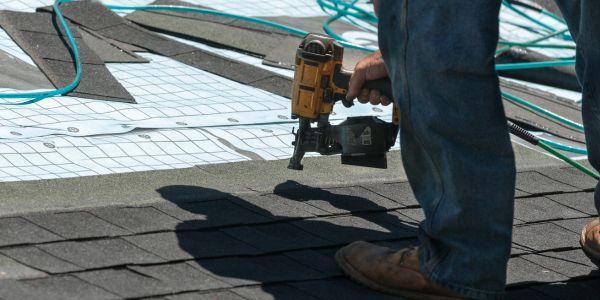Silicone Myths: BUSTED
By Jeremy Grunewald, R&D Manager Tropical Roofing Products.
Silicone coatings have been misunderstood for many years and subject to these four common myths.
- Silicone Roof Coatings are “Waterproof”
- “Nothing Sticks to Silicone”
- Silicone Coatings are “better” than Acrylic Coatings
- 100% Silicone Coatings are 100% Solids
Read on to find out the truth about silicone roof coatings.
1. Silicone Roof Coatings are Waterproof. This is the most common misleading and incorrect term associated with silicone roof coatings, “silicones.” The correct terminology is that silicones are water-resistant, or more specifically water-repellent. The term waterproof is defined as inherently being impervious to water; water cannot penetrate the membrane or coating. All silicones on the market today possess some level of permeability, typically 3.0-12.0 perms, which allow water vapors to permeate through the coating due to forces from hydrostatic pressure.
Silicones are designed to hold ponded water, which the National Roofing Contractors Association (NRCA) defines as holding pooling water for 48 hours. It is in the very nature of roof coatings to be permeable and allow trapped moisture in the decking, insulation, or underlayment to evaporate allowing the building to breathe. If silicones find themselves in ponded water circumstances for periods longer than 48 hours, water begins to penetrate the coating and make its way to the underlying membrane or coating which may result in coating delamination, adhesive failure, telegraphing, or blistering. Roofing systems are waterproof due to the type of membranes or barriers that are underneath the silicone coating. However, even the best of the silicones by themselves are not waterproof.
2. “Nothing Sticks to Silicone.” Though this may be seen time and time again in the field, this is a myth that has been perpetuated for years. It is true that asphaltic and bitumous mastics, cements, coatings, and emulsions as well as water or solvent borne acrylics, polyurethanes, and even Sprayed-in-place Polyurethane Foams (SPF) do not have positive adhesion to silicone coatings so it is understandable where the myth came from.
To put some brief science and explanation behind the phenomenon, silicone films have lower surface energies than most other coating types in the market place, coming in around 20-30 dynes/cm. For reference, Teflon™ and non-stick coatings are around 18 dynes/cm whereas acrylic and epoxy coatings tend to be closer to 40-50 dynes/cm. The lower the substrate surface energy, the more difficult it is to adhere to the substrate, i.e. silicones have low surface energy so they are difficult to adhere to. This means that silicone surfaces, once cured, are very slick and slippery as you can experience by walking on a silicone roof in the morning before the dew has evaporated or after a recent rain storm.
The answer is knowing which silicone coatings in the market place have low surface energies so that they can stick to other higher surface energy silicones and coatings. It is important to be aware that certain silicone technologies in the market do adhere to existing and new silicone coatings. We are of the age where this myth can be put to rest as current, market available technologies and coatings exist, such as Tropical Roofing Products’ 924 Eterna-Sil Premium Silicone Roof Coating, overcoming and “busting” this myth.
3. Silicone Roof Coatings are “Better” than Acrylic Roof Coatings. More than just an opinion, this idea has proliferated the roof coatings industry for nearly a decade. As one may guess, opinions aside, there are pros and cons that exist for both silicone and acrylic roof coatings. Silicone coatings show greater resistance to ponded water areas than do acrylic coatings while acrylic coatings have greater Dirt Pickup Resistance (DPR) and much greater tear resistance than their silicone counterparts. There is a time and place for both technologies. Below is a short analysis of when and where to use either coating to gain the most benefit out of your maintenance and restoration coating choice - silicone or acrylic.
Generally, positively sloped roofs with inclines greater than 1/12 are excellent candidates for acrylic top coats. Roofing terrains that exhibit positive, sound slope and drainage across the roofing system, likely do not have large ponded areas and as a result there is no need to utilize a silicone coating for the entire system. The benefits of a brighter and whiter coating can be realized due to the greater DPR and harder film of the acrylic coating. The coating is more durable and less likely to be damaged from hail, foot-traffic, and/or debris from storms and winds. In those low-lying areas where ponding may occur, silicone coatings may be used in a hybrid type manner as a patch over those areas but the remainder of the roof can be coated with the acrylic coating. This will allow the roof coating system to be “tailor-made” and custom to that specific roof, utilizing the strengths of both the acrylic and silicone coating together. Every building and roof is unique and has its own story to tell, so why not the maintenance and restoration system?
Near dead-flat and low-sloped roofs with inclines less than 1/24 (½:12) should immediately call into mind the need for a more water-resistant solution than an acrylic top coat. Areas with very low slope, less than 1/24, are highly susceptible to ponding and a silicone coating should be considered. Acrylic coatings under ponded conditions will likely swell and blister causing water intrusion underneath the coating, leading to potential leaks in the roofing system and coating delamination.
If the low-sloped roof exhibits no signs of ponded water and there is adequate, positive drainage then either coating type is likely a candidate to consider. There are downsides and upsides of both coatings to consider from a cost, labor, and application standpoint; however, from a performance perspective, silicone coatings have better ponded water resistance and acrylic coatings have far superior tear resistance, greater durability, and greater DPR performance.
4. 100% Silicone Coatings are 100% Solids. High solids silicones are made with 100% silicone polymers that are not diluted down with any types of solvents, at least that is what the labels would lead you to believe. Upon further inspection, most high solids silicones are on average 90-96% solids by volume. There is no definition to what separates high solids silicones from their lower solids counter parts. This is a relative term that implies only that high solids silicones are greater in solids content than their solvent diluted versions, the “low-solids” or “solvent-based” silicones at around 70-80% solids by volume.
Many of the market available high solids silicones contain a small portion of VOC exempt solvents or other chemicals diluting them to these lower 90% values. These solvents may be added for a variety of reasons, for instance to help with adhesion or to help thin out the coating. 100% silicone simply refers to the quality of the silicone polymer that is used in the coating which ultimately only takes up only a fraction of what the entire coating is made from. The rest of the coating is filled with pigments and other chemicals that aid in cure speed, adhesion, and other performance characteristics that make each coating unique. This “chemical finger print” differentiates each silicone coating allowing each coatings brand manufacturer to stand apart from the rest.
Tropical Roofing Products’ 924 Eterna-Sil Premium Silicone Roof Coating is a 95% volume solids product and offers the most unique and advanced chemical finger print in the coatings industry. Formulated and designed specifically for direct-bond adhesion to all common roofing substrates including existing and aged silicone, falling shy of the impossible 100% volume solids, is a necessary trade to achieve the greatest adhesion performance in the industry.
For technical inquiries on roof coatings technology including our new Eterna-Sil series of silicone products, please contact Jeremy Grunewald at jeremy@gotropical.com for more information or visit www.tropicalroofingproducts.com.

-2025-xtv-mls-tour-2.png)





















Comments
Leave a Reply
Have an account? Login to leave a comment!
Sign In